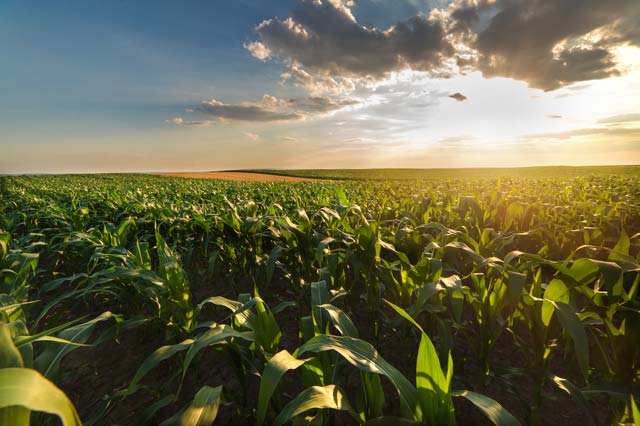Reflections on the Unpredictable 2023 Growing Season: A Roller Coaster Ride in Wisconsin
Dec 18, 2023

By Shane Johnson, Vice President of Agronomy Operations
As 2023 comes to an end, I can't help but reflect on the roller coaster growing season we had this year. Planting conditions were as good as ever before across all of Wisconsin, which led to the fastest planting season ever. Then we all just struggled to catch rains. Most of us picked up some timely rains to limp the crop through until the faucet was somewhat turned back on in late July. The late rains allowed most areas to produce a top 5 crop, and in some areas even better. Who would have thought it was possible with ½ the rain of a typical growing season?
The dry weather this year made herbicide and fertilizer decisions/applications very difficult for all. Our Agronomists battled through all the weed escapes this year to due the lack of water to activate our herbicides. Our incredible Operations team took on an additional 200,000 acres of application this year company-wide, helping in the battle to keep our fields as weed-free as possible. The same goes for the fertilizer side. We were all surviving forecasted rain to forecasted rain trying to pick the best time to do our top dress work and post herbicide applications. If 2023 showed us anything, it proved to us that we can't ever give up on a crop too early. A top 5 crop in 2023, with the lack of rain we had, is a truly amazing feat!
I can’t thank our entire Agronomy staff enough for their efforts in 2023. They recommended and delivered to you over 340,000 tons of fertilizer, 280,000 units of seed, and another near-record year of crop protection products. We continue adding assets, technology, and solid agronomic solutions to keep helping to add to your bottom lines.
Thank you for your continued patronage in 2023. We are looking forward to another prosperous year with you in 2024. May God bless you and your families during this holiday season.
Merry Christmas!
As 2023 comes to an end, I can't help but reflect on the roller coaster growing season we had this year. Planting conditions were as good as ever before across all of Wisconsin, which led to the fastest planting season ever. Then we all just struggled to catch rains. Most of us picked up some timely rains to limp the crop through until the faucet was somewhat turned back on in late July. The late rains allowed most areas to produce a top 5 crop, and in some areas even better. Who would have thought it was possible with ½ the rain of a typical growing season?
The dry weather this year made herbicide and fertilizer decisions/applications very difficult for all. Our Agronomists battled through all the weed escapes this year to due the lack of water to activate our herbicides. Our incredible Operations team took on an additional 200,000 acres of application this year company-wide, helping in the battle to keep our fields as weed-free as possible. The same goes for the fertilizer side. We were all surviving forecasted rain to forecasted rain trying to pick the best time to do our top dress work and post herbicide applications. If 2023 showed us anything, it proved to us that we can't ever give up on a crop too early. A top 5 crop in 2023, with the lack of rain we had, is a truly amazing feat!
I can’t thank our entire Agronomy staff enough for their efforts in 2023. They recommended and delivered to you over 340,000 tons of fertilizer, 280,000 units of seed, and another near-record year of crop protection products. We continue adding assets, technology, and solid agronomic solutions to keep helping to add to your bottom lines.
Thank you for your continued patronage in 2023. We are looking forward to another prosperous year with you in 2024. May God bless you and your families during this holiday season.
Merry Christmas!